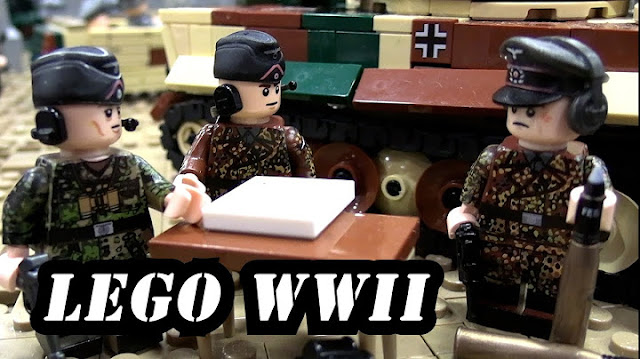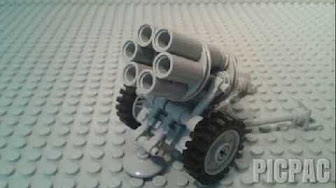I was working on two War of the Roses armies in the summer recess when a guy who was returning a chainsaw to me noticed them and asked what I was doing. He seemed quite enthralled so I promised that when I’d finished them I’d invite him around for a game…and some Pastis…(markedly different from Pasty’s, but just as bad for your health when consumed to excess).
For a newbie I wanted to make the game playable and fun so I had been on the fence for a while about what rules to use. While trying to translate a few recognised sets into French for my opponents benefit I kept coming back to a set I’d devised myself back in the day. Now it meant a certain amount of, cough, …erm… « work » (lol) to translate these too, but they were considerably shorter at only 9 pages and being hugely lazy that was all the excuse I needed to choose them.
I would normally shy away from blow by blow accounts of a games mechanics but since I have picked up a few ideas off other people over the years I thought I’d break the habits of a lifetime and share some of the more esoteric, nay controversial aspects, that these rules include.
First off, and worth stressing, is that they are very abstracted and simplistic, designed actually for big battles with tiny troops like my 2mm ECW lads. They seek to bundle morale, training and equipment into one of four classes, ignoring the usual levy / retainer type designations. If you really want to know how far an arrow can fly against a 20kmh headwind or you resist the very notion that guys with the best equipment can be just as likely to run as peasants then these will be of no interest to you. Move along. Nothing to see here.
I started with the premise of two roughly equal forces and that there would in each game always be an attacker and a defender. The objectives in this period / setting are thankfully pretty simple - kill the enemy noble, or a good proportion of his forces. Settling on 15 units per side, (with a unit approximating a company) I decided that the loss of 5 units of any type would break an army and cause an automatic game loss.
Two other things to note are that 1) with small scale figures, and these troops are 6mm, on board counters can clutter the battlefield and spoil the aesthetic, so I’ve kept them to a minimum. 2) The battle depicted is actually only one wing of a much larger engagement and it is possible for you to lose the encounter but win the day (if that makes any sense).
The attackers army is composed of 5 companies of archers, 1 mounted men at arms, 2 dismounted men at arms, 3 units of billmen, 1 unit of mercenary handgunners, 1 unit of light artillery, 1 unit of light horse, and 1 company of peasant spearmen.
 |
| The totally made up Earl of Dudley’s retinue which are the attackers and thus include the light horse in the left foreground. |
The defender gets something similar but swops out the handgunners for crossbowmen and the light horse for a company of mercenary pikes.
 |
| The equally made up Duke of Tipton (family / west midlands joke) and his retinue of defenders, mercenary pikes to the fore. |
The defender chooses one of his units to leave off board in exchange for 3 items of defensive terrain. In this case 1 set of pavises for the crossbows and 2 sets of sharpened stakes for the archers. He also chooses 6 hexes worth of regular terrain that he deploys to his best advantage.
Before any units are deployed the attacker gets to move (if he wants to) up to 2 hexes worth of the terrain by a maximum of 2 hexes in any direction…but not off board.
 |
| The defender chose to anchor his flanks on 4 hexes of impenetrable gorse and 2 of woods (counting as rough terrain). For his part the attacker moved two of the gorse bush hexes (as indicated by the red arrows) in order to create an opening of clear ground around the flank and rear. |
In accordance with keeping it simple there are only 3 types of terrain, clear, rough going…and impenetrable.
Finally the defender deploys his entire force including the defensive terrain items chosen when he sacrificed a unit.
 |
| The two units of archers on the left are protected by the stakes to their front. Not so obvious is the bunch if pavises in front of the crossbows in the middle of the line. The pavises can be moved with the troops if required but the stakes cannot. |
Having had a chance to observe the defenders deployment the attacker sets up his units in the hope of exploiting any perceived weakness. Two companies may occupy a hex together if they are of the same type or they are archers which can be paired with billmen or dismounted men at arms. Such a pairing provides advantages and disadvantages depending on the type of combat engaged in and which unit type is foremost.
 |
| The attacker deploys in order to exploit a perceived weakness in the enemy line. Players are invited to imagine that fighting is also taking place on one or more flanks. |
So far, so good, but now we get to the weird bit most folk won’t like.
Apart from the command stand each unit is secretly awarded one of the following quality markers. Note each army commander has, initially at least, no idea as to which of his units will perform well in battle, (for who can know what is truly in men’s hearts?). The quality markers are 1 x « We could be heroes », 2 x « In it to win it », 9 x « Only here for the beer » and 3 x « Ready to leg it ».
These quality markers affect how a unit responds in combat and can be explained broadly like this:
1. We could be heroes. These guys will go the extra mile in combat, ignoring the first of any melee hits and getting to re role one combat dice. While you would naturally assume mounted knights might automatically adopt this mantle the random deployment of the quality markers means any one unit could receive it. I would justify peasant spearmen with this marker as being highly motivated by the proximity of their home settlement.
2. In it to win it. Broadly speaking these are troops who might materially benefit from the battles outcome and thus fight with a little more determination than most. Benefits could include the possibility of individual ennoblement, the acquisition of enemy territory or even just the prospect of expensive things that can be stolen off the wealthiest of the corpses.
3. Only here for the beer. These lads are here because they’ve been told to be, and not showing their faces on the day might prove detrimental to their future employment and their families housing prospects. They’ll fight as well as they have to, but don’t expect too much when the going gets tough.
4. Ready to leg it. Bad morale, cowardice, treachery, are all possible factors affecting this bunch. They really don’t want to be on the battlefield and will seek the first possible opportunity to bugger off. Typically this might naturally include any peasants but in this game it could just as easily be the cream of society.
Usually you only get to see the quality of your own or your opponents units when they come under missile fire or are engaged in melee, but shown below the owning player is able, once per turn, to secretly view the status of any units he is currently adjacent (i.e. in the next hex to).
 |
| Before the fighting kicks off the Duke of Tipton is disturbed to find his leading dismounted men at arms are apparently ready to leg it, the guys behind them are not exactly convinced of his cause and the only unit he can really put his full trust in are the motley bunch of billmen recruited from the local town. |
Equally disappointed is the Earl of Dudley - with no feel for who he can really depend on, so far, and the nagging worry that the « We could be heroes » quality marker may have been discarded along with the unit he sacrificed to provide the field defences.
If you feel you have the time as the army commander you can of course spend precious command points moving your command stand around the field to assess the men’s individual determination. There is also the limited ability to change men’s quality but more on this later.
So the two armies are deployed and the attacker automatically gets to go first in the first turn. Here he rolls 2D6 and scores 8, which gives him 8 command points to spend this turn. Fighting in melee occurs automatically as does missile fire (within the constraints of firing arcs and line of sight) but command points are needed to move units, shake off disorganisation, activate special events and resupply archers running low on arrows.
 |
| A useful command point score - but there’s lots to do. |
I’ll do another post shortly on the battle itself, but I’ll close with exciting news on the crisp front.
Having been subject to the French crisp market for nigh on nine years (give or take) I’ve long viewed the lack of Cheese and Onion flavour (truly the king of flavours) as a glaring omission and quite frankly a source of national shame. Deciding to « be the change I wish to see » I recently wrote to President Macron highlighting the matter and asking him to ensure that immediate action be taken to remedy the omission - especially with the eyes of the world upon us during the olympics. Though he is obviously a busy chap (and disappointingly never wrote back) ((rude))… it can hardly be a coincidence that this was the first thing I noticed when perusing the croustillant racks in Carrefour yesterday.
Coincidence…?
I think not!
Toodleooh!
































































